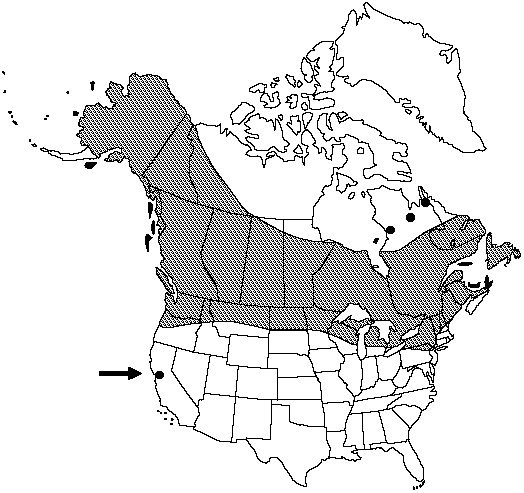Difference between revisions of "Equisetum palustre"
Sp. Pl. 2: 1061. 1753.
imported>Volume Importer |
imported>Volume Importer |
||
| Line 51: | Line 51: | ||
|publication year=1753 | |publication year=1753 | ||
|special status= | |special status= | ||
| − | |source xml=https:// | + | |source xml=https://bitbucket.org/aafc-mbb/fna-data-curation/src/2e0870ddd59836b60bcf96646a41e87ea5a5943a/coarse_grained_fna_xml/V2/V2_358.xml |
|genus=Equisetum | |genus=Equisetum | ||
|subgenus=Equisetum subg. Hippochaete | |subgenus=Equisetum subg. Hippochaete | ||
Revision as of 20:22, 5 November 2020
Aerial stems monomorphic, green, branched or unbranched, 20–80 cm; hollow center small, to 1/3 stem diam.; vallecular canals nearly as large. Sheaths elongate, 4–9 × 2–5 mm; teeth dark, 5–10, narrow, 2–5 mm, margins white, scarious. Branches when present only from midstem nodes, spreading, hollow; ridges 4–6; valleys rounded; 1st internode of each branch shorter than subtending stem sheath; sheath teeth narrow. 2n =216.
Phenology: Cones maturing in summer.
Habitat: Marshes and swamps
Elevation: 0–1500m
Distribution

Alta., B.C., Man., N.B., Nfld. and Labr. (Nfld.), N.W.T., N.S., Ont., P.E.I., Que., Sask., Yukon, Alaska, Calif., Idaho, Maine, Mich., Minn., Mont., N.H., N.Y., N.Dak., Oreg., Pa., Vt., Wash., Wis., Eurasia s to Himalayas, n China, Korea, Japan.
Discussion
The name Equisetum palustre var. americanum has been used for specimens from the flora that have longer teeth than those from Eurasia.
Selected References
None.